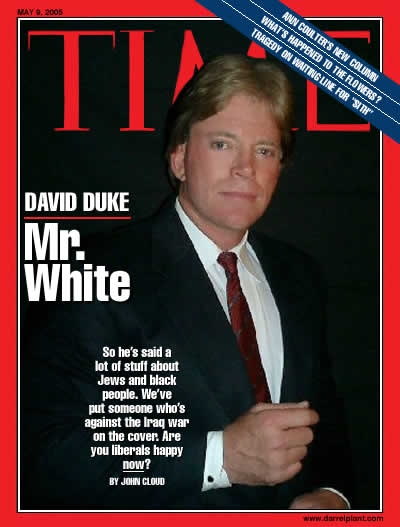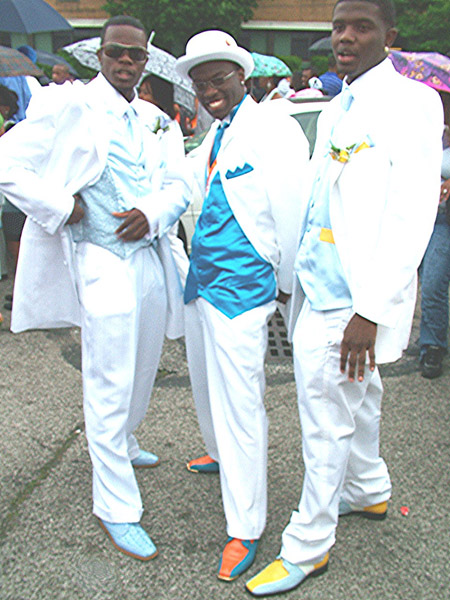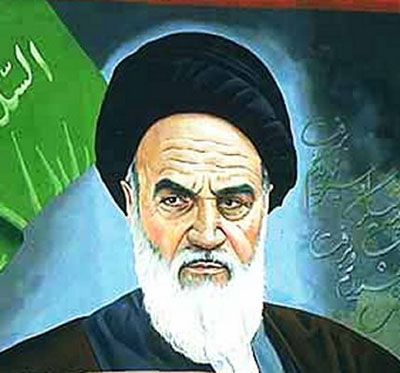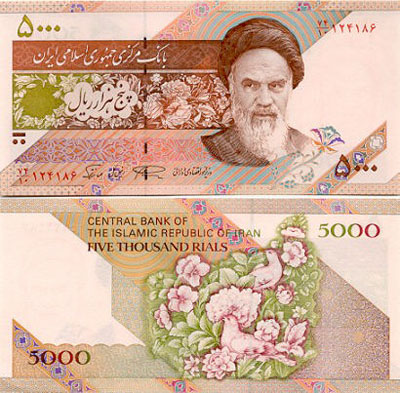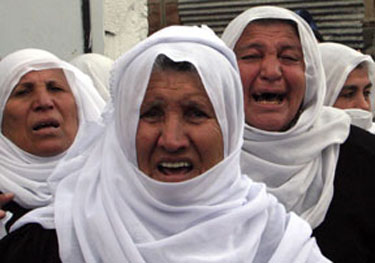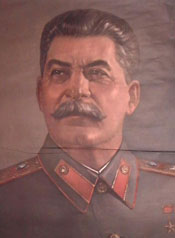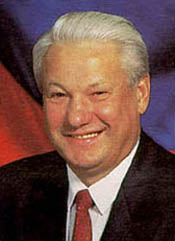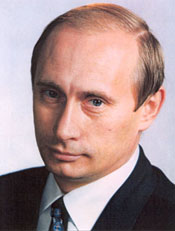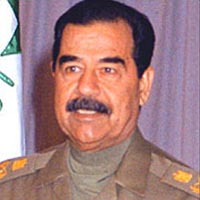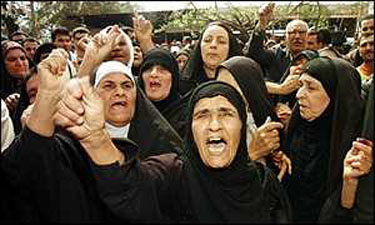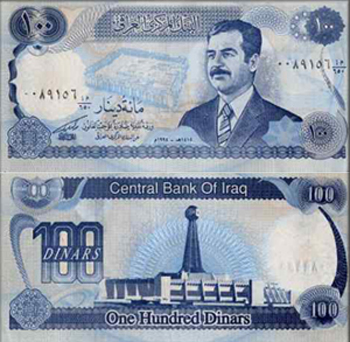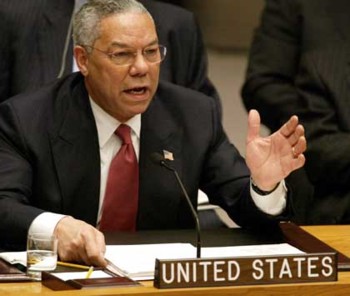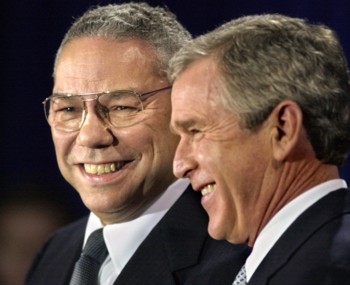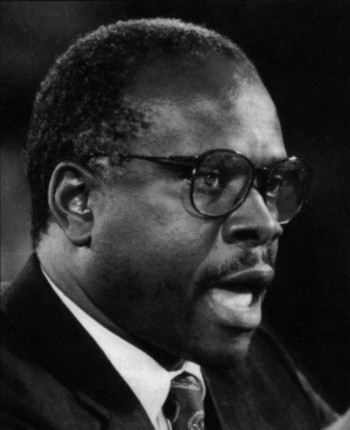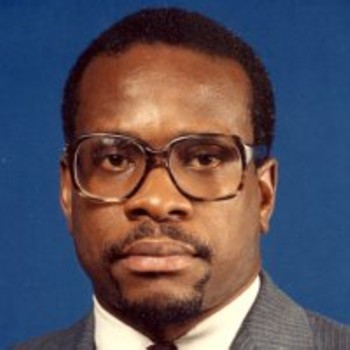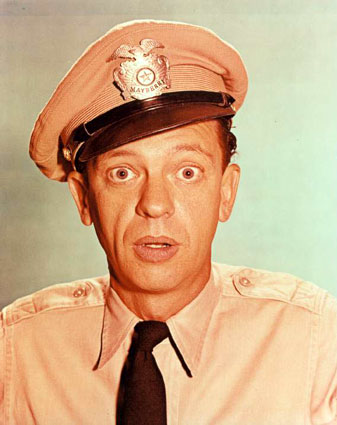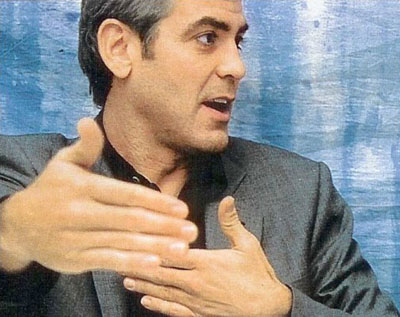
Editor’s note: GEORGE CLOONEY is making guest appearances on all kinds of blogs ever since his post Academy Awards show comments that went something like, “the white man is the devil”. Now we at the website don’t totally believe that statement because we have seen some devilish things done by all races of people, but we thought that if we asked GEORGE to clarify himself then maybe his comments wouldn’t be chalked up to the free premium booze at the Vanity Fair party. Plus, GEORGE is a big fan of our Hot Azz Mess photo galleries so how could we hate on him?
‘Crash’ is a white-supremacist movie.
The Oscar-winning best picture – widely heralded, especially by white liberals, for advancing an honest discussion of race in the United States – is, in fact, a setback in the crucial project of forcing white America to come to terms with the reality of race and racism, white supremacy and white privilege.
The central theme of the film is simple: Everyone is prejudiced – Black, white, Asian, Iranian and, we assume, anyone from any other racial or ethnic group. We all carry around racial/ethnic baggage that’s packed with unfair stereotypes, long-stewing grievances, raw anger, and crazy fears. Even when we think we have made progress, we find ourselves caught in frustratingly complex racial webs from which we can’t seem to get untangled.
For most people – including myself – that’s painfully true; such untangling is a life’s work in which I try to make progress, but never feel finished. But that can obscure a more fundamental and important point: This state of affairs is the product of the actions of white people like myself. In the modern world, white elites invented race and racism to protect their power, and white people in general have accepted the privileges that we get from the system and helped maintain it. The problem doesn’t spring from the individual prejudices that exist in various ways in all groups but from white supremacy, which is expressed not only by individuals but in systemic and institutional ways. There’s little hint of such understanding in the film, which makes it especially dangerous in a white-dominant society in which white people are eager to avoid confronting our privilege.

So, ‘Crash’ in effect is white supremacist propaganda because it minimizes the reality of white supremacy. Its faux humanism and simplistic message of tolerance directs attention away from a white-supremacist system and undermines white accountability for the maintenance of that system. I have no way of knowing whether this was the conscious intention of writer/director PAUL HAGGIS, but it emerges as the film’s dominant message.
While viewing ‘Crash’ may make some people, especially white people, uncomfortable during and immediately after viewing, the film seems designed, at a deeper level, to make white people feel better. As the film asks us to confront personal prejudices, it allows us white viewers to evade our collective responsibility for white supremacy. In ‘Crash’, emotion trumps analysis, and psychology is more important than politics. The result: White people are off the hook.
The first step in putting white people back on the hook is by pressing the case that the United States in 2006 is a white-supremacist society. Even with the elimination of formal apartheid and the lessening of the worst of the overt racism of the past, the term is still appropriate, in ideological and material terms.
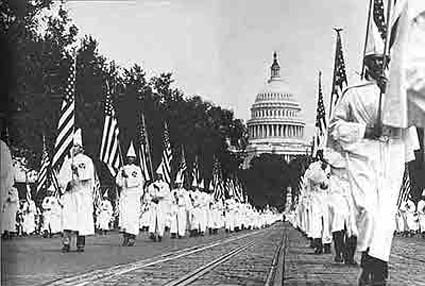
The United States was founded, of course, on an ideology of the inherent superiority of white Europeans over non-whites that was used to justify the holocausts against the indigenous people and the Africans, which created the nation and propelled the U.S. economy into the industrial world. That ideology also has justified legal and extralegal exploitation of every non-white immigrant group.
Today, polite white people renounce such claims of superiority. But scratch below that surface politeness and the multicultural rhetoric of most white people, and one finds that the assumptions about the superiority of the art, music, culture, politics, and philosophy rooted in white Europe are still very much alive. No poll can document these kinds of covert opinions, but one hears it in the angry and defensive reaction of white America when non-white people dare to point out that whites have unearned privilege. Watch the resistance from white America when any serious attempt is made to modify school or college curricula to reflect knowledge from other areas and peoples. The ideology of white supremacy is all around.
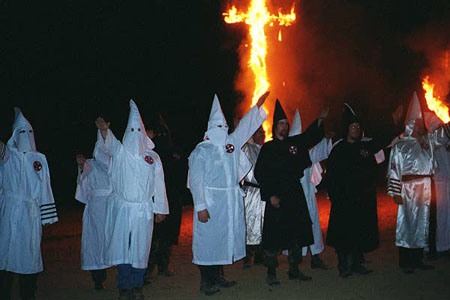
That ideology also helps white Americans ignore and/or rationalize the racialized disparities in the distribution of resources. Studies continue to demonstrate how, on average, whites are more likely than members of racial/ethnic minorities to be on top on measures of wealth and well-being. Looking specifically at the gap between white and Black America, on some measures Black Americans have fallen further behind white Americans during the so-called post-civil rights era. For example, the typical Black family had 60 percent as much income as a white family in 1968, but only 58 percent as much in 2002. On those measures where there has been progress, closing the gap between Black and white is decades, or centuries, away.

What does this white supremacy mean in day-to-day life? The New York Times highlighted one recent study found that in the United States, a Black applicant with no criminal record is less likely to receive a callback from a potential employer than a white applicant with a felony conviction. In other words, being Black is more of a liability in finding a job than being a convicted criminal. Into this new century, such discrimination has remained constant.
That’s white supremacy. Many people, of all races, feel and express prejudice, but white supremacy is built into the attitudes, practices and institutions of the dominant white society. It’s not the product simply of individual failure but is woven into society, and the material consequences of it are dramatic.
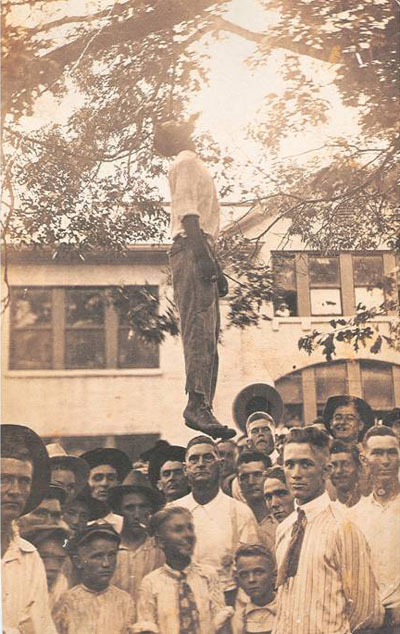
It seems that the people who made ‘Crash’ either don’t understand that, don’t care, or both. The character in the film who comes closest to articulating a systemic analysis of white supremacy is Anthony, the carjacker played by the rapper LUDACRIS. But putting the critique in the mouth of such a morally unattractive character undermines any argument he makes, and his analysis is presented as pseudo-revolutionary blather to be brushed aside as we follow the filmmakers on the real subject of the film – the psychology of the prejudice that infects us all.
That the characters in ‘Crash’ – white and non-white alike – are complex and have a variety of flaws is not the problem; we don’t want films populated by one-dimensional caricatures, simplistically drawn to make a political point. Those kinds of political films rarely help us understand our personal or political struggles. But this film’s characters are drawn in ways that are ultimately reactionary.
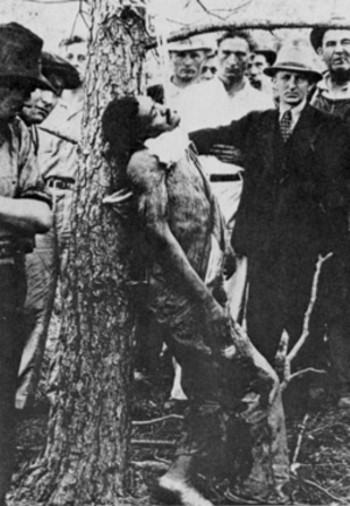
Although the film follows a number of story lines, its politics are most clearly revealed in the interaction that two black women have with an openly racist white Los Angeles police officer played by MATT DILLON. During a bogus traffic stop, DILLON’s Officer Ryan sexually violates Christine, the upper-middle-class black woman played by THANDIE NEWTON. But when fate later puts Ryan at the scene of an accident where Christine’s life is in danger, he risks his own life to save her, even when she at first reacts hysterically and rejects his help. The white male is redeemed by his heroism. The black woman, reduced to incoherence by the trauma of the accident, can only be silently grateful for his transcendence.
Even more important to the film’s message is Ryan’s verbal abuse of Shaniqua, a black case manager at an insurance company (played by LORETTA DEVINE). She bears Ryan’s racism with dignity as he dumps his frustration with the insurance company’s rules about care of his father onto her, in the form of an angry and ignorant rant against affirmative action. She is empathetic with Ryan’s struggle but unwilling to accept his abuse, appearing to be one of the few reasonable characters in the film. But not for long.

In a key moment at the end of the film, Shaniqua is rear-ended at a traffic light and emerges from her car angry at the Asian driver who has hit her. “Don’t talk to me unless you speak American,” she shouts at the driver. As the camera pulls back, we are left to imagine the language she uses in venting her prejudice.
In stark contrast to Ryan and his racism is his police partner at the beginning of the film, Hanson (played by RYAN PHILLIPE). Younger and idealistic, Hanson tries to get Ryan to back off from the encounter with Christine and then reports Ryan’s racist behavior to his black lieutenant, Dixon (played by KEITH DAVID). Dixon doesn’t want the hassles of initiating a disciplinary action and Hanson is left to cope on his own, but he continues to try to do the right thing throughout the movie. Though he’s the white character most committed to racial justice, at the end of the film Hanson’s fear overcomes judgment in a tense moment, and he shoots and kills a black man. It’s certainly true that well-intentioned white people can harbor such fears rooted in racist training. But in the world ‘Crash’ creates, Hanson’s deeper awareness of the nature of racism and attempts to combat it are irrelevant, while Ryan somehow magically overcomes his racism.
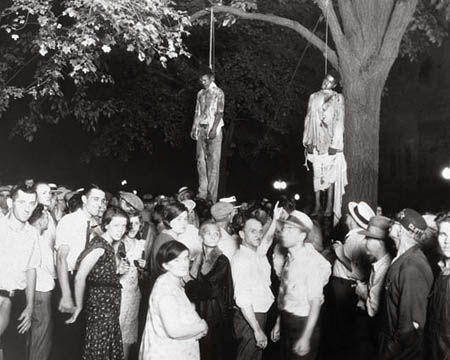
Let me be clear: ‘Crash’ is not a racist movie, in the sense of crudely using overtly racist stereotypes. It certainly doesn’t present the white characters as uniformly good; most are clueless or corrupt. Two of the non-white characters(a Chicano locksmith and an Iranian doctor) are the most virtuous in the film. The characters and plot lines are complex and often intriguing. But “Crash” remains a white-supremacist movie because of what it refuses to bring into the discussion.
At this point in my critique, defenders of the film have suggested to me that I expect too much, that movies tend to deal with issues at this personalized level and I shouldn’t expect more. This is evasion. For example, whatever one thinks of its politics, another recent film, my film, ‘Syriana’, presents a complex institutional analysis of U.S. foreign policy in an engaging fashion. It’s possible to produce a film that is politically sophisticated and commercially viable. HAGGIS is clearly talented, and there’s no reason to think he couldn’t have deepened the analysis in creative ways.
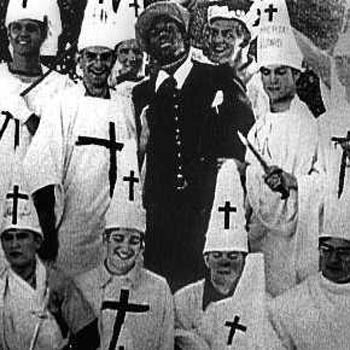
‘Crash’ fans also have offered this defense to us: In a culture that seems terrified of any open discussion of race, isn’t some attempt at an honest treatment of the complexity of the issue better than nothing? That’s a classic argument from false alternatives. Are we stuck with a choice between silence or bad analysis? Beyond that, in this case the answer may well be no. If ‘Crash’ and similar efforts that personalize and psychologize the issue of race keep white America from an honest engagement with the structure and consequences of white supremacy, the ultimate effect may be reactionary. In that case, “nothing” may be better.
The problem of ‘Crash’ can be summed up through one phrase from the studio’s promotional material, which asserts that the film “boldly reminds us of the importance of tolerance.”
That’s exactly the problem. On the surface, the film appears to be bold, speaking of race with the kind of raw emotion that is rare in this culture. But that emotion turns out, in the end, to be manipulative and diversionary. The problem is that the film can’t move beyond the concept of tolerance, and tolerance is not the solution to America’s race problem. White people can – and often do – learn to tolerate difference without ever disturbing the systemic, institutional nature of racism.
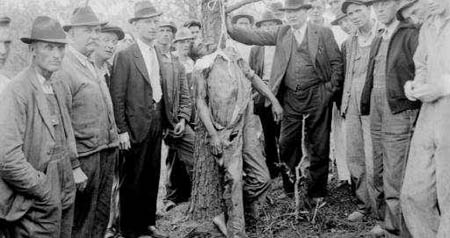
The core problem is not intolerance but white supremacy – and the way in which, day in and day out, white people accept white supremacy and the unearned privileges it brings.
‘Crash’ paints a multi-colored picture of race, and in a multi-racial society recognizing that diversity is important. Let’s just not forget that the color of racism is white.
